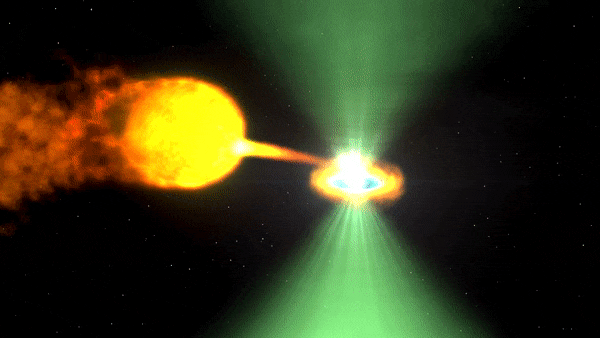NASA’s Fermi Mission discovers 300 Gamma-Ray Pulsars
A new catalog produced by a French-led international team of astronomers shows that NASA’s Fermi Gamma-ray Space Telescope has discovered 294 gamma-ray-emitting pulsars, while another 34 suspects await confirmation. This is 27 times the number known before the mission launched in 2008.

The new catalog represents the work of 170 scientists across the globe including Prof. Dr. Gabrijela Zaharijas from the Center for Astrophysics and Cosmology and School of Science at the University of Nova Gorica. A dozen radio telescopes carry out regular monitoring of thousands of pulsars, and radio astronomers search for new pulsars within gamma-ray sources discovered by Fermi. Other researchers have teased out gamma-ray pulsars that have no radio counterparts through millions of hours of computer calculation, a process called a blind search.
Pulsars touch on a wide range of astrophysics research, from cosmic rays and stellar evolution to the search for gravitational waves and dark matter. They are a type of neutron star, the city-sized leftover of a massive sun that has exploded as a supernova. Neutron stars, containing more mass than our Sun in a ball less than 17 miles wide, represent the densest matter astronomers can study directly. They possess strong magnetic fields, produce streams of energetic particles, and spin quickly 716 times a second for the fastest known. Pulsars, in addition, emit narrow beams of energy that swing lighthouse-like through space as the objects rotate. When one of these beams sweeps past Earth, astronomers detect a pulse of emission.
Fermi's neutron star discoveries even extend beyond our galaxy. The mission discovered the first gamma-ray pulsar in another galaxy, the neighbouring Large Magellanic Cloud, in 2015. And in 2021, astronomers announced the discovery of a giant gamma-ray flare from a magnetar — a different type of neutron star — located in the Sculptor galaxy, about 11.4 million light-years away.
-> NASA press release
-> The published paper
Source: The text is taken and adapted from the NASA PR.
